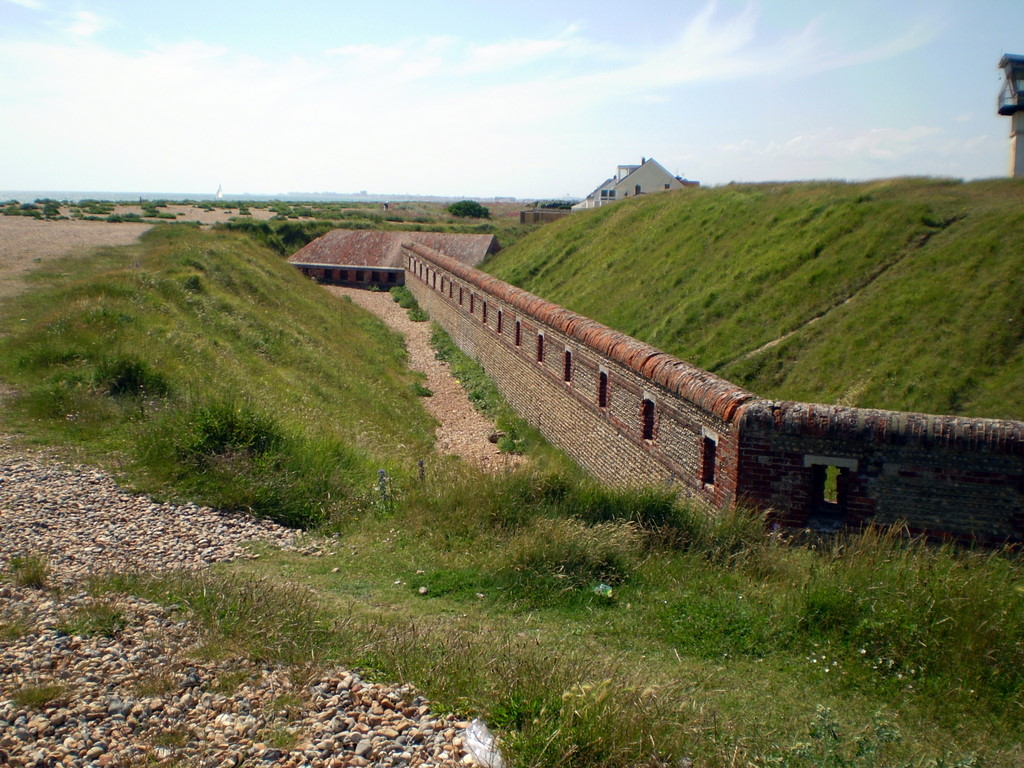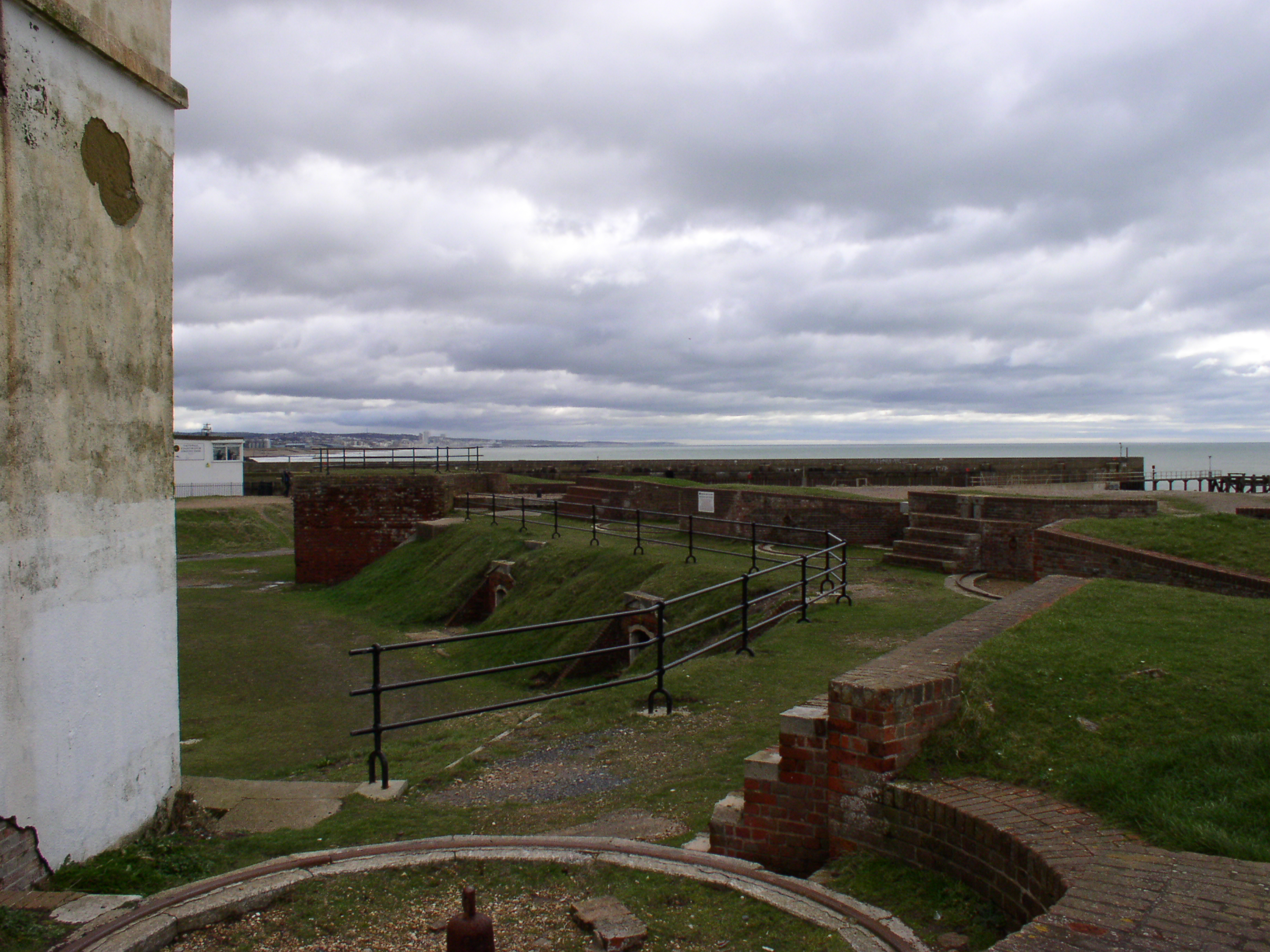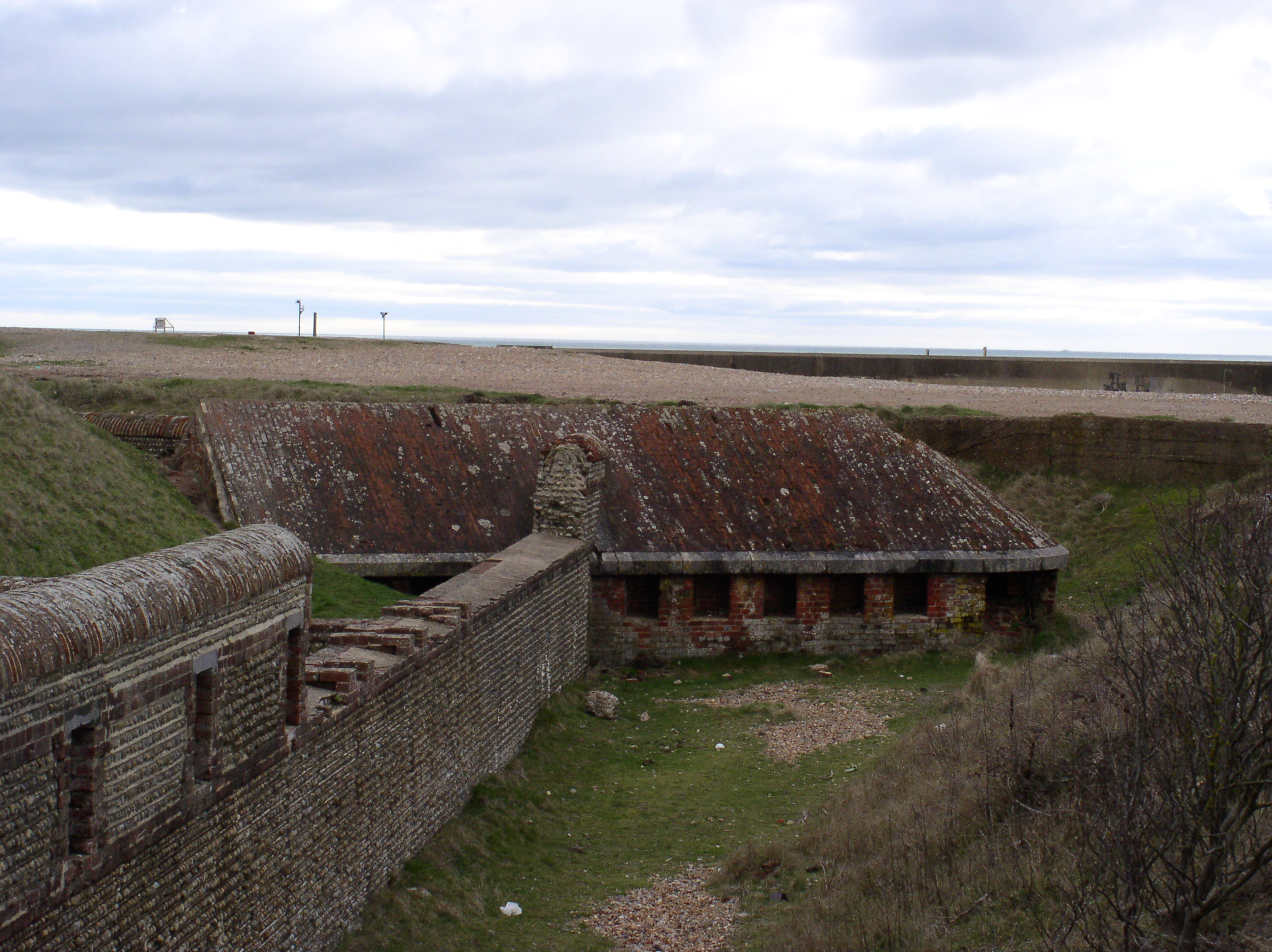Shoreham Redoubt on:
[Wikipedia]
[Google]
[Amazon]
 Shoreham Redoubt (also known as Shoreham Fort or Kingston Redoubt) is a historical military defensive structure and scheduled monument at the entrance to Shoreham harbour, at the mouth of the
Shoreham Redoubt (also known as Shoreham Fort or Kingston Redoubt) is a historical military defensive structure and scheduled monument at the entrance to Shoreham harbour, at the mouth of the




 The fort consisted of a gun platform 15 ft (4.6m) above sea level and was in the shape of a lunette, that is a straight sided crescent. The gun platform and ramparts were surrounded by a ditch, with a
The fort consisted of a gun platform 15 ft (4.6m) above sea level and was in the shape of a lunette, that is a straight sided crescent. The gun platform and ramparts were surrounded by a ditch, with a
Friends of Shoreham Fort
Retrieved 2009-11-04 {{Redoubts Forts in West Sussex Buildings and structures in West Sussex 19th-century forts in England Adur District
 Shoreham Redoubt (also known as Shoreham Fort or Kingston Redoubt) is a historical military defensive structure and scheduled monument at the entrance to Shoreham harbour, at the mouth of the
Shoreham Redoubt (also known as Shoreham Fort or Kingston Redoubt) is a historical military defensive structure and scheduled monument at the entrance to Shoreham harbour, at the mouth of the River Adur
The Adur ( or ) is a river in Sussex, England; it gives its name to the Adur district of West Sussex. The river, which is long, was once navigable for large vessels up as far as Steyning, where there was a large Saxon port, but by the 11th ce ...
in West Sussex
West Sussex is a county in South East England on the English Channel coast. The ceremonial county comprises the shire districts of Adur, Arun, Chichester, Horsham, and Mid Sussex, and the boroughs of Crawley and Worthing. Covering an ar ...
, England. It was planned in the 1850s during a period of political alarm in the United Kingdom. Construction of the fort was completed in June 1857 at a cost of £11,685 (equivalent to approximately £1.2 million today). The design is similar to that of Littlehampton Fort, which had been built in 1854.
Description
 The fort consisted of a gun platform 15 ft (4.6m) above sea level and was in the shape of a lunette, that is a straight sided crescent. The gun platform and ramparts were surrounded by a ditch, with a
The fort consisted of a gun platform 15 ft (4.6m) above sea level and was in the shape of a lunette, that is a straight sided crescent. The gun platform and ramparts were surrounded by a ditch, with a Carnot wall
A Carnot wall is a type of loop-holed wall built in the ditch of a fort or redoubt. It takes its name from the French mathematician, politician, and military engineer, Lazare Carnot. Such walls were introduced into the design of fortifications from ...
running along its centre, designed to halt attackers attempting to cross the ditch. The wall itself had loopholes for defenders to fire through. Instead of the open bastions at the Littlehampton fort, Shoreham had a caponier
A caponier is a type of defensive structure in a fortification. Fire from this point could cover the ditch beyond the curtain wall to deter any attempt to storm the wall. The word originates from the French ', meaning "chicken coop" (a ''capon'' ...
with a brick roof at each of the three angles of the walls. This meant that riflemen could fire along the walls at besiegers in the ditch. The central caponier straddled the ditch and was connected to the fort by a tunnel under the gun platform and ramparts. The east and west caponiers doubled as latrines. A barrack block at the rear had room for 38 men. The fort was armed with six 68-pounder gun
The 68-pounder cannon was an artillery piece designed and used by the British Armed Forces in the mid-19th century. The cannon was a smoothbore muzzle-loading gun manufactured in several weights, the most common being , and fired projectiles of ...
s on traversing platforms.
Later history
The fort was garrisoned by a battery of the1st Sussex Artillery Volunteers
The 1st Sussex Artillery Volunteers was a part-time unit of the British Army's Royal Artillery from 1859 to 1961. Raised as coastal defence artillery, the unit later served as field artillery in Mesopotamian campaign, Mesopotamia during World War ...
, who were considered to be one of the top volunteer artillery units and won a prize for the accuracy of their shooting in 1865.
A military review in 1873 found that the fort's original armaments were now obsolete and its construction inadequate. It was also considered to be too vulnerable to attack from the land, having only sea-facing defences. It was recommended that a new, stronger and more defensible fort be built on a site nearby but this was never undertaken. By 1886, the original armament had been updated and replaced by two 80 pounders and three 64 pounder guns.
In the early 20th century the fort served as an open-air film studio for early silent movies, with four films made there in 1914.
During World War II
World War II or the Second World War, often abbreviated as WWII or WW2, was a world war that lasted from 1939 to 1945. It involved the vast majority of the world's countries—including all of the great powers—forming two opposin ...
the fort became part of an emergency coastal battery with aiming lights and two 6-inch guns, which were in emplacements built on top of the terreplein
In fortification architecture, a terreplein or terre-plein is the top, platform, or horizontal surface of a rampart, on which cannon are placed,''Webster's International Dictionary of the English Language'', Vol 2, 1895 protected by a parapet. In ...
. After the war, the fort's barrack block was demolished and a coastguard tower built on the gun platform. A restoration of the site was undertaken by West Sussex County Council
West Sussex County Council (WSCC) is the authority that governs the non-metropolitan county of West Sussex. The county also contains seven district and borough councils, and 158 town, parish and neighbourhood councils. The county council has 7 ...
during 1977 and 1978.Alsdworth, p. 50
The site today
Today the gun platform, ditch,Carnot wall
A Carnot wall is a type of loop-holed wall built in the ditch of a fort or redoubt. It takes its name from the French mathematician, politician, and military engineer, Lazare Carnot. Such walls were introduced into the design of fortifications from ...
and caponiers
A caponier is a type of defensive structure in a fortification. Fire from this point could cover the ditch beyond the curtain wall to deter any attempt to storm the wall. The word originates from the French ', meaning "chicken coop" (a ''capon'' ...
can be viewed in their restored state. The foundations of parts of the original barrack block and parade ground can be made out. Outside the fort to the east is a safety observation tower, now operated by volunteers from the National Coastwatch Institution
The National Coastwatch Institution is a voluntary organisation and registered charity providing a visual watch along the UK's coasts, and is not to be confused with HM Coastguard.
History
The National Coastwatch Institution (NCI) was founde ...
and used to observe the adjacent harbour entrance and sea approaches.
The redoubt is currently being further restored by a local group of volunteers, the Friends of Shoreham Fort, the aim being to restore it and rebuild the barrack block to create a museum and multi-purpose community asset.
In March and April 2014, an old Nissen hut
A Nissen hut is a prefabricated steel structure for military use, especially as barracks, made from a half-cylindrical skin of corrugated iron. Designed during the First World War by the American-born, Canadian-British engineer and inventor Majo ...
was located on the site on one of the old Nissen hut bases. The hut is primarily used as an education centre for the Friends of Shoreham Fort as well as a display space. The Nissen hut had been dismantled in late 2013 at its original site near Chichester
Chichester () is a cathedral city and civil parish in West Sussex, England.OS Explorer map 120: Chichester, South Harting and Selsey Scale: 1:25 000. Publisher:Ordnance Survey – Southampton B2 edition. Publishing Date:2009. It is the only ci ...
after two former land girls living there since World War II had died. The hut was then transferred to Shoreham Fort and rebuilt.
In September 2020 the Friends of Shoreham Fort built a memorial training trench to honour all those who trained in the local area before leaving for France in the First World War. The trench will be used for education and was partly funded by the National Lottery and Adur and Worthing Councils.
See also
*Eastbourne Redoubt
Eastbourne Redoubt is a circular coastal defence fort at Eastbourne, East Sussex, on the south coast of England. It was built in 1805 as part of the British anti-invasion preparations during the Napoleonic Wars. The building is now owned by th ...
*Pevensey Castle
Pevensey Castle is a Middle Ages, medieval castle and former Roman Britain, Roman Saxon Shore fort at Pevensey in the English county of East Sussex. The site is a scheduled monument in the care of English Heritage and is open to visitors. Built ...
*Martello tower
Martello towers, sometimes known simply as Martellos, are small defensive forts that were built across the British Empire during the 19th century, from the time of the French Revolutionary Wars onwards. Most were coastal forts.
They stand up ...
References
Bibliography
* * *External links
Friends of Shoreham Fort
Retrieved 2009-11-04 {{Redoubts Forts in West Sussex Buildings and structures in West Sussex 19th-century forts in England Adur District
Redoubt
A redoubt (historically redout) is a fort or fort system usually consisting of an enclosed defensive emplacement outside a larger fort, usually relying on earthworks, although some are constructed of stone or brick. It is meant to protect soldi ...
Redoubts